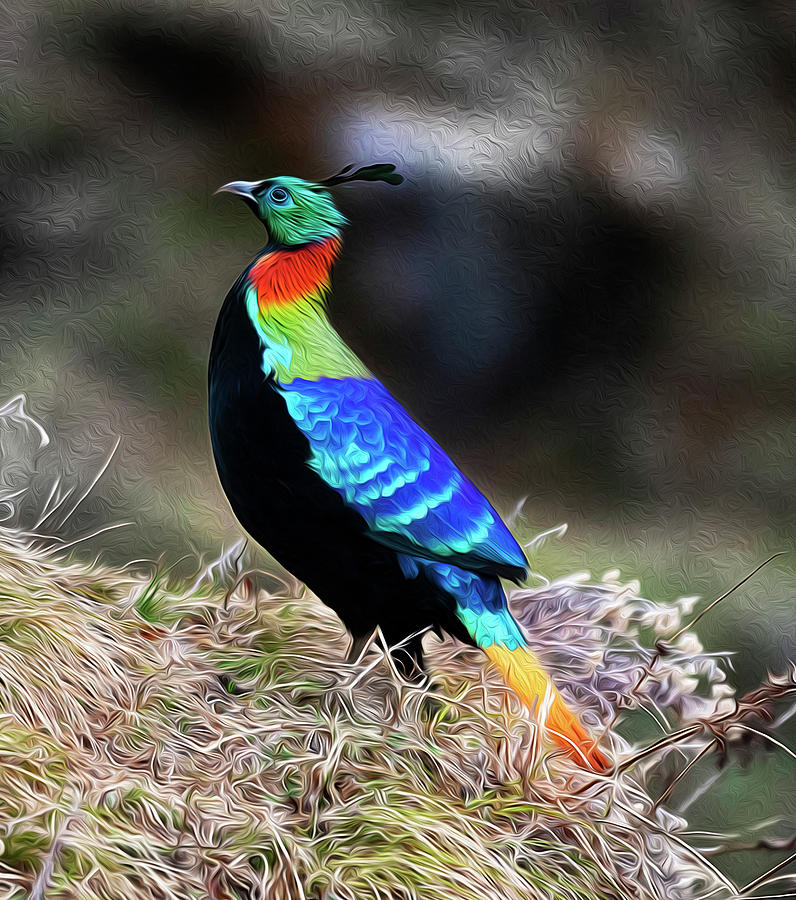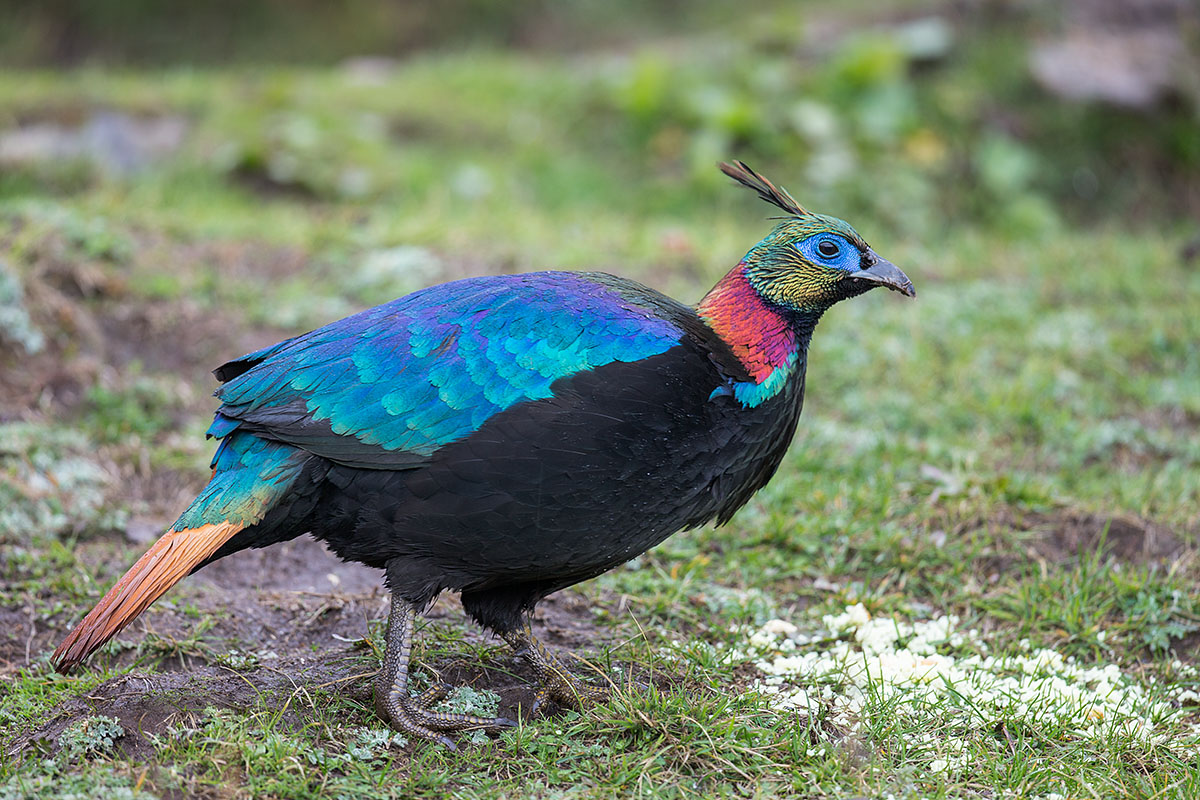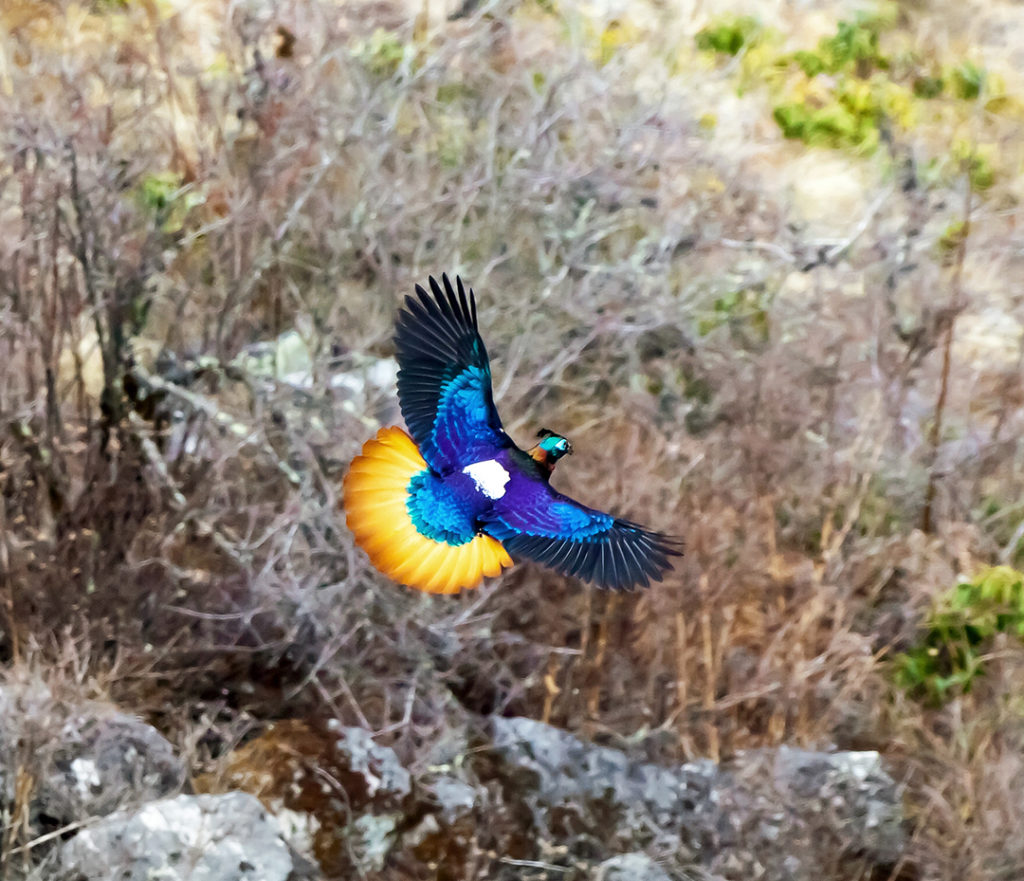


The population of this species in most of its range is threatened due to poaching and other anthropogenic factors. Seen in pairs during the breeding season (April to August), they form large coveys and involve in communal roosting during the winter. They, however, show tolerance to snow and have been observed to dig through snow for roots, tubers and other plant parts, and invertebrates. They seem to exhibit clear and fluctuating altitudinal migration reaching as low as 2000m in winter. It occupies upper temperate oak-conifer forests interspersed with open grassy slopes, cliffs and alpine meadows between 2400 "? 4500m, mostly concentrating in a narrow belt of 2700 "? 3700m. There is also a report of its occurrence in Burma. Its natural range spreads from eastern Afghanistan through the Himalayas including Kashmir region of Northern Pakistan, India (states of Himachal Pradesh, Uttarakhand, Sikkim and Arunachal Pradesh), Nepal, southern Tibet and Bhutan. The Himalayan Monal secures a distinct position among pheasants due to its prominent build, brilliant plumage and strong association with local folklore. First year males and immatures resemble females, but first year males are larger and the immatures are less distinctly marked.
Himalayan monal Patch#
Females have a prominent white patch in the fore neck and a white strip on the tail.

Tail feathers of males are uniformly rufous being darker towards the tips, where as the lower tail coverts of females are white, barred with black and rufous. Notable features in males are a long crest that is metallic green, changeable reddish copper on the back and sides of the neck and, a prominent white back and rump while in flight (birds of northwestern India lack this). Adult males possess a long crest, are feathered with multicoloured plumage throughout their body, while the females, like in other pheasants, are dull in colour with the upper parts covered with dark brownish-black feathers. About 70 cm in length, the weight of males and females range between 1980-2380g and 1800-2150g respectively. It is a relatively large sized bird with reference to family Phasianidae. However, recent studies have shown that the male Himalayan Monals of northwestern India lack the white rump that many Himalayan Monals have, and have more green on the breast, indicating the possibility of a second subspecies. There is, so far, no confirmed record of subspecies in the Himalayan Monal.

Recently, survey carried out in Arunachal Pradesh discovered a new type of Lophophorus species and its identity, though believed to be a subspecies of Sclater's Monal or a potential new species, is yet to be confirmed. It is the National bird of Nepal, where it is known as the Danfe, and the state bird of Uttarakhand. The Himalayan Monal, Lophophorus impejanus also known as the Impeyan Monal or Impeyan Pheasant or Danphe is a bird of genus Lophophorus of the Pheasant family, Phasianidae.


 0 kommentar(er)
0 kommentar(er)
